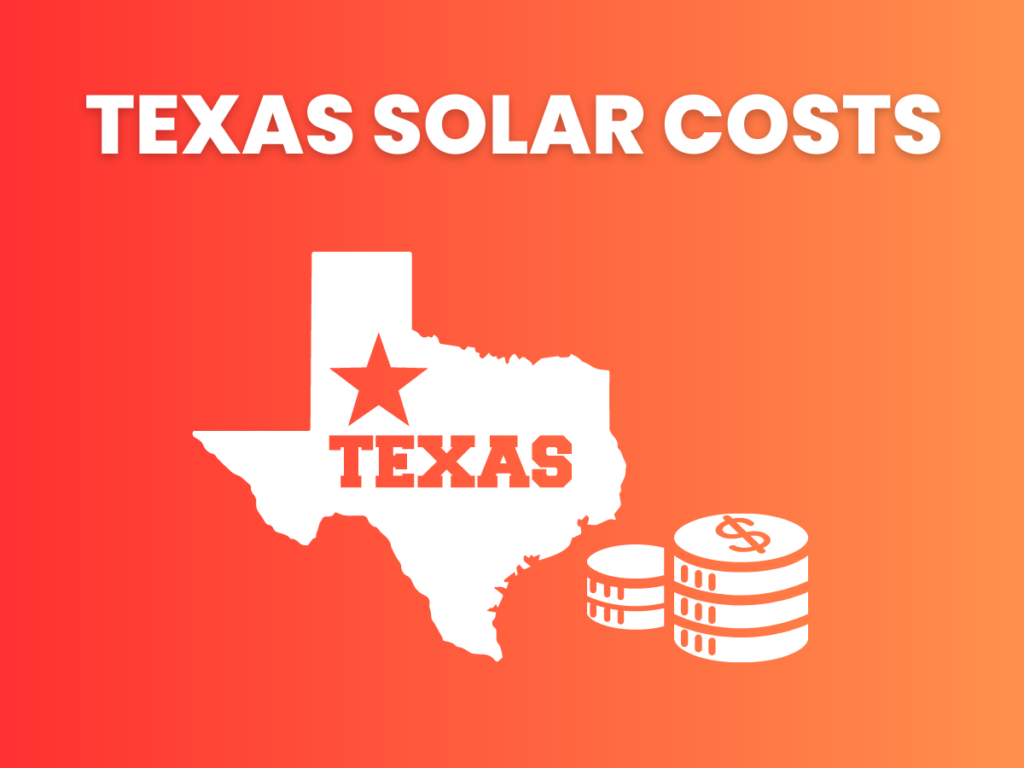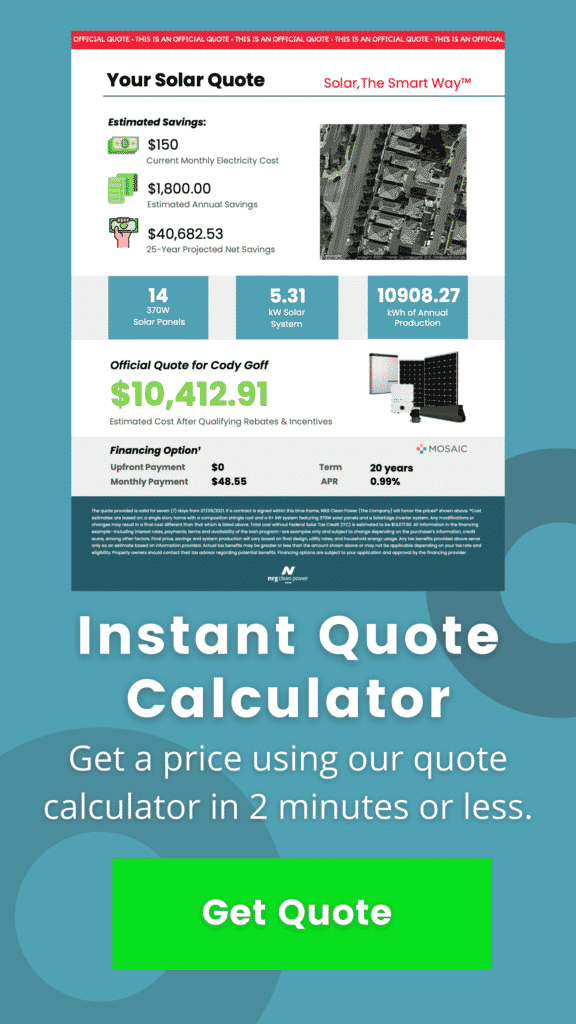
Solar energy is gaining popularity across the United States, and Texas is leading the way. The Lone Star State is second—behind only California—when it comes to total solar electric capacity.
According to the Solar Energy Industries Association (SEIA), Texas has a total solar energy capacity of 17,247 MW — enough to power 1,957,307 homes. Currently, solar contributes to nearly 5% of all energy generated in Texas, and that number is set to rise exponentially in the next few years.
Residential solar energy systems are driving this growth in renewable energy adoption across Texas. Electricity rates in the state have been on the rise, and its decentralized energy economy means no state-wide policies control costs.
Luckily for homeowners, solar expenses have been trending in the opposite direction. The cost of installing a residential solar energy system has gone down by 53% over the last decade. It is now a much more affordable addition to households, making it a popular source of clean energy for Texans.
The high initial costs are the biggest barrier for homeowners to adopt solar energy. Despite the decline in prices, the expenses to set up a residential solar energy system can still run up to thousands of dollars.
Many different factors affect the final cost of installation. Before discounts from rebates and incentives, the set-up costs range between $15,500 and $31,000, depending on the property’s energy requirements.
There are many reasons to install solar power in your home. It is better for the environment, it will help you save money on electricity bills over time, and it significantly increases the property value of your home. The benefits of solar energy make it clear that it is well worth the cost.
What’s the Cost of Installing Solar Panels in Texas?
The cost of solar panels can be determined by average price per watt. In Texas, the per-watt price is $2.69, which is only slightly higher than the national average of $2.66. Calculate the energy needs of your household to get an idea of what size solar energy system you require.
However, the system’s total cost includes much more than just the panels. Here are some of the critical factors that impact the total expenses included with installation:
Solar Energy System Size
Bigger solar panel systems are more expensive overall. However, the cost per panel decreases as your system increases in size.
Along with panels, a solar energy system could also include storage solutions like a solar battery.
Solar Panel Brand and Type
The total price of installation also depends on the type, brand, and quality of solar panels used.
Because Texas has abundant sunlight for most of the year, there is little need for powerful, premium solar panels. Standard panels will be enough to meet a household’s energy requirements in the long term.
Installation Charges
Solar companies levy installation charges to cover their labor costs. The installation charges are usually included in the quote by the company, so homeowners should compare their options to get a reasonable price.
Permits
Because Texas has a decentralized energy economy, homeowners may require a permit from their city before installing solar panels on their homes.
Solar companies can guide customers through the process of acquiring the necessary permits before installation.
Interconnection
Another additional cost associated with solar energy is the interconnection fee that homeowners must pay their electricity provider to integrate their system into the utility grid. This is a safety concern that must be considered.
In areas where net metering is allowed, owners can sell surplus power back to their energy provider to recoup installation costs.
Incentives to Go Solar in Texas
The solar market in Texas is booming. The state is poised to overtake California as the national leader in overall solar energy capacity in the next five years.
This trend is being encouraged by several incentives that encourage Texan homeowners to go solar:
Federal Incentives
In 2022, the White House announced the Inflation Reduction Act, which aimed to provide clean energy for all Americans. Among its provisions was continuing to offer a 30% federal tax credit for residential solar adoption. The credit was due to end in 2024, but the Act means it will be available to homeowners until 2035.
With this tax credit, 30% of your solar energy system’s value can be claimed against your income tax burden. If the credit’s value is higher than the tax owed, it can be rolled over for up to five years.
State Incentives
With its decentralized energy economy, Texas does not have state-wide policies encouraging the adoption of solar energy. But it does promote clean energy by offering an exemption on property tax increases incurred by solar energy installations. This means installing solar panels will increase your home’s assessment value but not your property taxes.
Along with the exemption on property tax, Texan cities and towns have formulated local government initiatives to encourage the adoption of solar energy. The Database of State Incentives for Renewables & Efficiency (DSIRE) maintains a list of local Texan programs offering rebates and incentives for solar energy.
Some of the biggest cities in Texas have their own programs to promote the adoption of clean energy initiatives. Here are some examples:
- The City of Austin’s residential solar rebate program grants homeowners a $2,500 rebate, a solar education course, and the installation of a qualifying solar energy system in their homes.
- In Dallas, the Farmers Electric Cooperative offers a rebate of up to $1,000 for solar energy upgrades.
- Many cities, like Houston and San Antonio, offer net metering programs to buy back solar energy generated by their installations.
Net Metering
Depending on where you live in Texas, you can avail of a local net metering program. Solar panel owners earn credits with their electricity provider for surplus energy produced by their system. Those credits are applied to future utility bills, further bringing down energy costs.
Net metering allows solar panel owners to maximize their savings and recoup their set-up costs more quickly.
Why Texas Is a Great State for Solar Energy
Electricity prices in Texas are higher than the national average. The decentralized energy economy makes solar an attractive option for those looking to power their own homes.
Along with independence from the local utility grid and reduced energy costs, solar energy has great potential in Texas because of the climate. The state sees an average of 237 days of sunlight in a year. The open tracts of land and large homes in Texas are ripe for solar panel installation.
The incentives currently offered by the federal government are also quite compelling—it’s an excellent time to adopt solar energy.
Are Solar Panels Worth the Cost?
The short answer is yes. Texans have the advantage of being in one of the best markets for solar energy in all of the United States. All the economic and environmental benefits of solar panel installation make this a simple answer.
In a matter of years, homeowners in Texas can expect to recoup the installation cost. Solar energy systems have a lifespan of up to 35 years, leaving plenty of time to simply enjoy the savings accrued.
Solar energy reduces your reliance on the grid, reduces your utility bills, and reduces your carbon footprint. With so many benefits, opting for solar energy in Texas is most definitely worth the cost.

Authored by Ryan Douglas
NRG Clean Power's resident writer and solar enthusiast, Ryan Douglas covers all things related to the clean energy industry.
Links & Sources:
https://www.seia.org/state-solar-policy/texas-solar
–
https://www.seia.org/sites/default/files/2022-09/Texas%20State-Factsheet-2022-Q3.pdf
–
https://www.ecowatch.com/solar/panel-cost/tx
–
https://www.ecowatch.com/solar/worth-it/tx
–
https://www.whitehouse.gov/cleanenergy/
–
https://www.ecowatch.com/solar/incentives/tx#local
–
–
https://programs.dsireusa.org/system/program?state=TX
–


